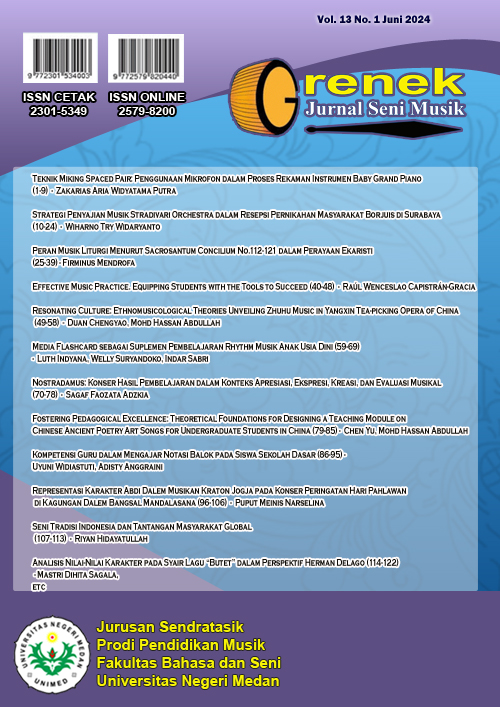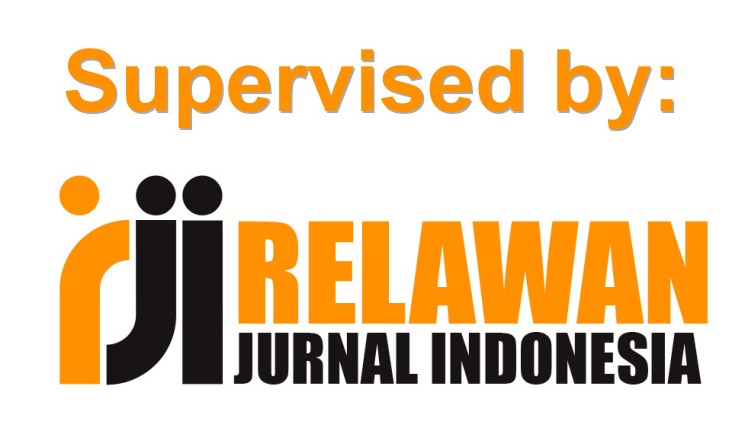Fostering Pedagogical Excellence: Theoretical Foundations for Designing a Teaching Module on Chinese Ancient Poetry Art Songs for Undergraduate Students in China
DOI:
https://doi.org/10.24114/grenek.v13i1.58011Keywords:
Effective Pedagogy, Theoretical Framework, Teaching Module, Chinese Poetry ArtAbstract
This paper explored the fundamental theoretical aspects involved in creating a comprehensive teaching module tailored for undergraduate students in China, with a specific emphasis on Chinese ancient poetry art songs. The process of constructing an effective teaching module was intricate, demanding a thorough exploration of various models and educational theories that laid the foundation for its development. The paper offered an overview of the theoretical framework employed in this undertaking, incorporating the ADDIE Model and key educational theories such as Jean Piaget's Constructivist Theory, Lev Vygotsky's Sociocultural Theory, and Howard Gardner's Multiple Intelligences. The ADDIE Model provided a structured approach to module development, guiding the systematic design, implementation, and evaluation phases to ensure that teaching materials were well-organized, efficient, and adaptable to diverse learning environments. Furthermore, the paper delved into the educational theories influencing the design of the teaching module. Piaget's Constructivist Theory emphasized active learning through hands-on experiences, Vygotsky's Sociocultural Theory underscored the role of social interaction and cultural context in learning, emphasizing collaborative learning experiences, and Gardner's Multiple Intelligences theory recognized the diversity of students' cognitive strengths, emphasizing the need for varied instructional strategies to cater to different learning styles. Through the integration of these theoretical foundations, this research aimed to develop a comprehensive, engaging, and effective educational resource tailored to the unique needs and learning preferences of students. The anticipated outcome of the teaching module was to enable educators to cultivate a greater understanding and appreciation of Chinese ancient poetry art songs among students.References
Armstrong, T. (2009). Multiple Intelligences in the Classroom (3rd ed.). ASCD.
Campbell, L., Campbell, B., & Dickinson, D. (2004). Teaching and Learning Through Multiple Intelligences (3rd ed.). Allyn & Bacon.
Creemers, B. P., et al. (2012). The advantages of teaching modules over traditional topic-
based teaching. Educational Psychology Review, 24(3), 483-497.
Gardner, H. (1983). Frames of Mind: The Theory of Multiple Intelligences. Basic Books.
Gardner, H. (1999). Intelligence Reframed: Multiple Intelligences for the 21st Century. Basic Books.
Kornhaber, M. L., Fierros, E. G., & Veenema, S. (2004). Multiple Intelligences: Best Ideas from Research and Practice. Allyn & Bacon.
Ries, E. (2016). Teaching modules: A conceptual framework. Journal of Education, 30(2), 45-58.
Shi Yujian & Xu Ying. (2020). Teaching module model for junior high English. English Teaching Research, 18(1), 56-70.
Sternberg, R. J., & Grigorenko, E. L. (2002). The Theory of Successful Intelligence. Review of General Psychology, 6(4), 316“342. DOI: https://doi.org/10.1177/001698620204600403
Wang Honglei. (2022). A model for a "live-streaming marketing course." Journal of Marketing Education, 36(2), 132-148.
Zhang Yibin. (2011). Model for teaching module development. Journal of Curriculum Studies, 15(2), 78-92.
Zhao Jiajia. (2018). Development of teaching modules for environmental art design. Journal of Art Education, 40(4), 215-230.
Downloads
Published
Issue
Section
License
Copyright (c) 2024 Chen Yu, Mohd Hassan Abdullah

This work is licensed under a Creative Commons Attribution-ShareAlike 4.0 International License.
Authors published with the Grenek: Jurnal Seni Musik agree to the following terms:
- Authors retain copyright and grant the journal the right of first publication with the work simultaneously licensed under a Creative Commons Attribution License (CC BY-SA 4.0) that allows others to share the work with an acknowledgment of the work's authorship and initial publication in this journal.
- Authors are able to enter into separate, additional contractual arrangements for the non-exclusive distribution of the journal's published version of the work (e.g., post it to an institutional repository or publish it in a book), with an acknowledgment of its initial publication in this journal.
- Authors are permitted and encouraged to post their work online (e.g., in institutional repositories or on their website) prior to and during the submission process, as it can lead to productive exchanges, as well as earlier and greater citation of published work. (See The Effect of Open Access)








